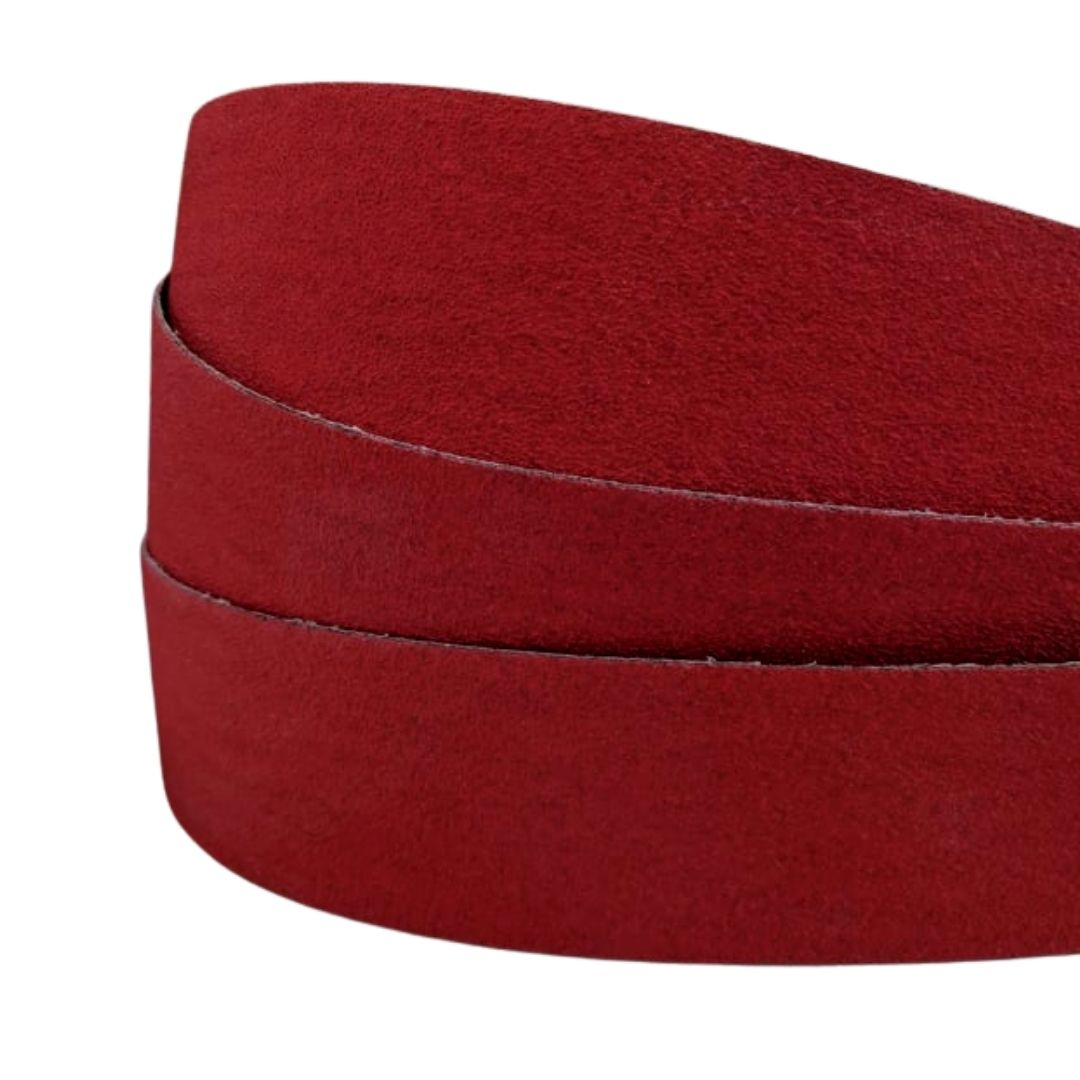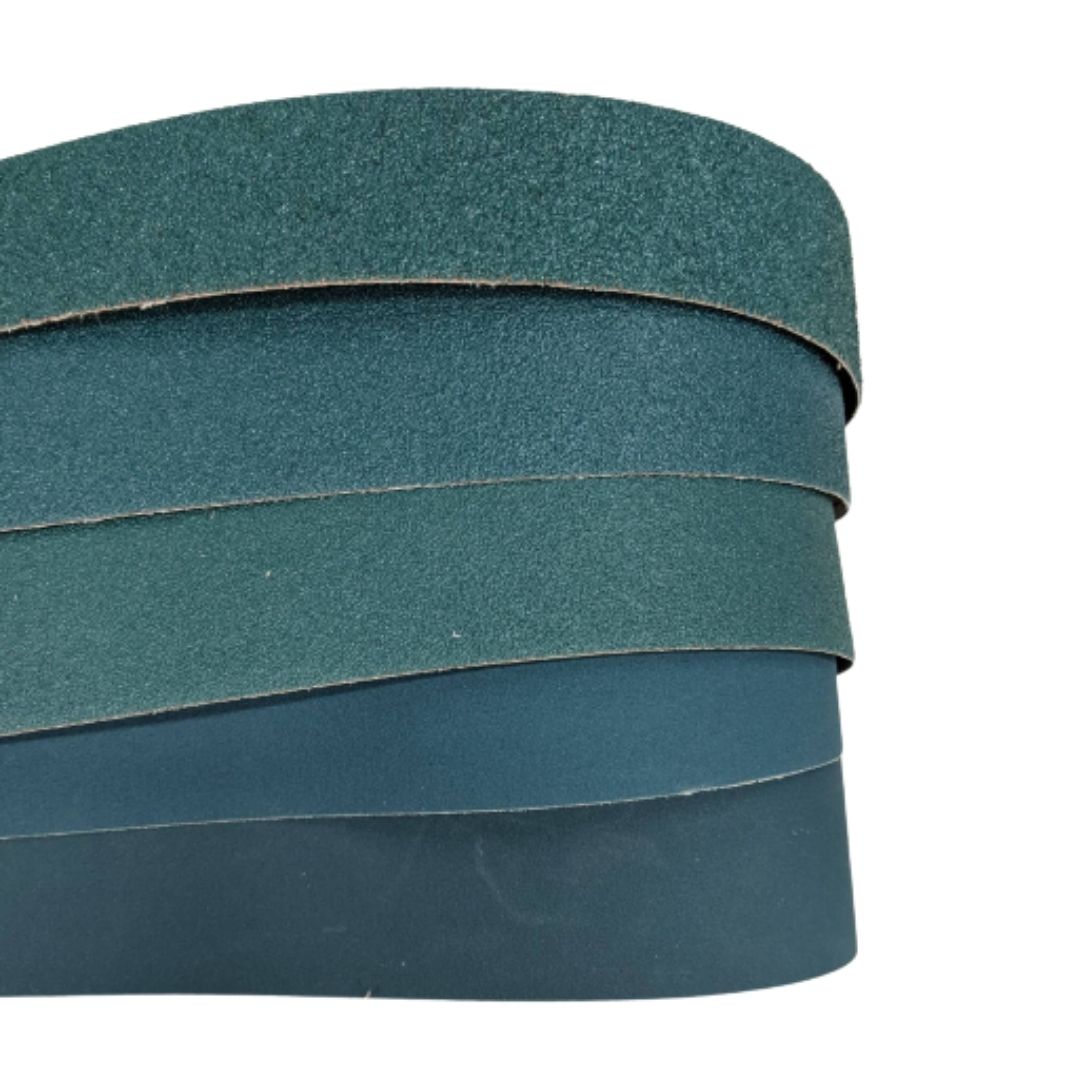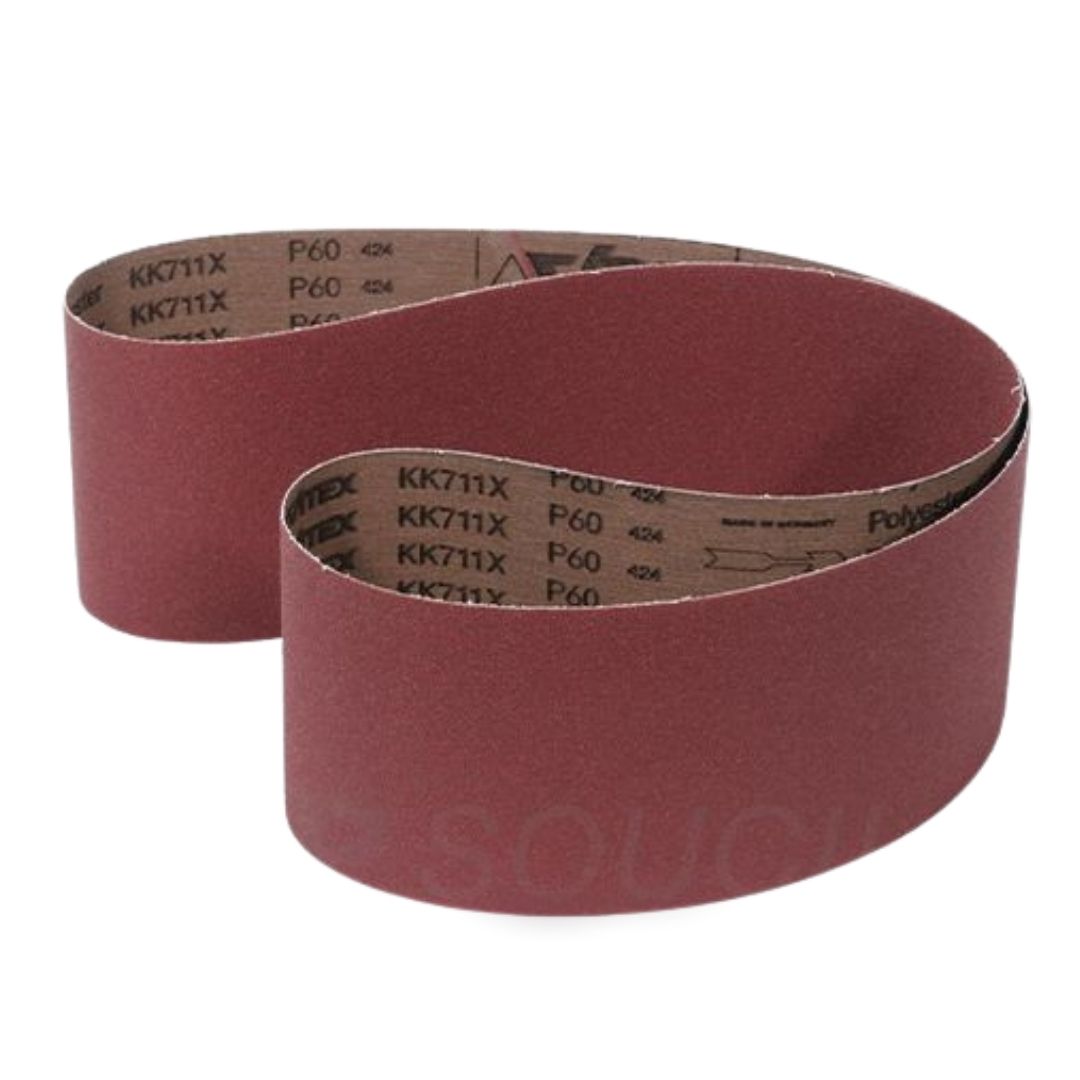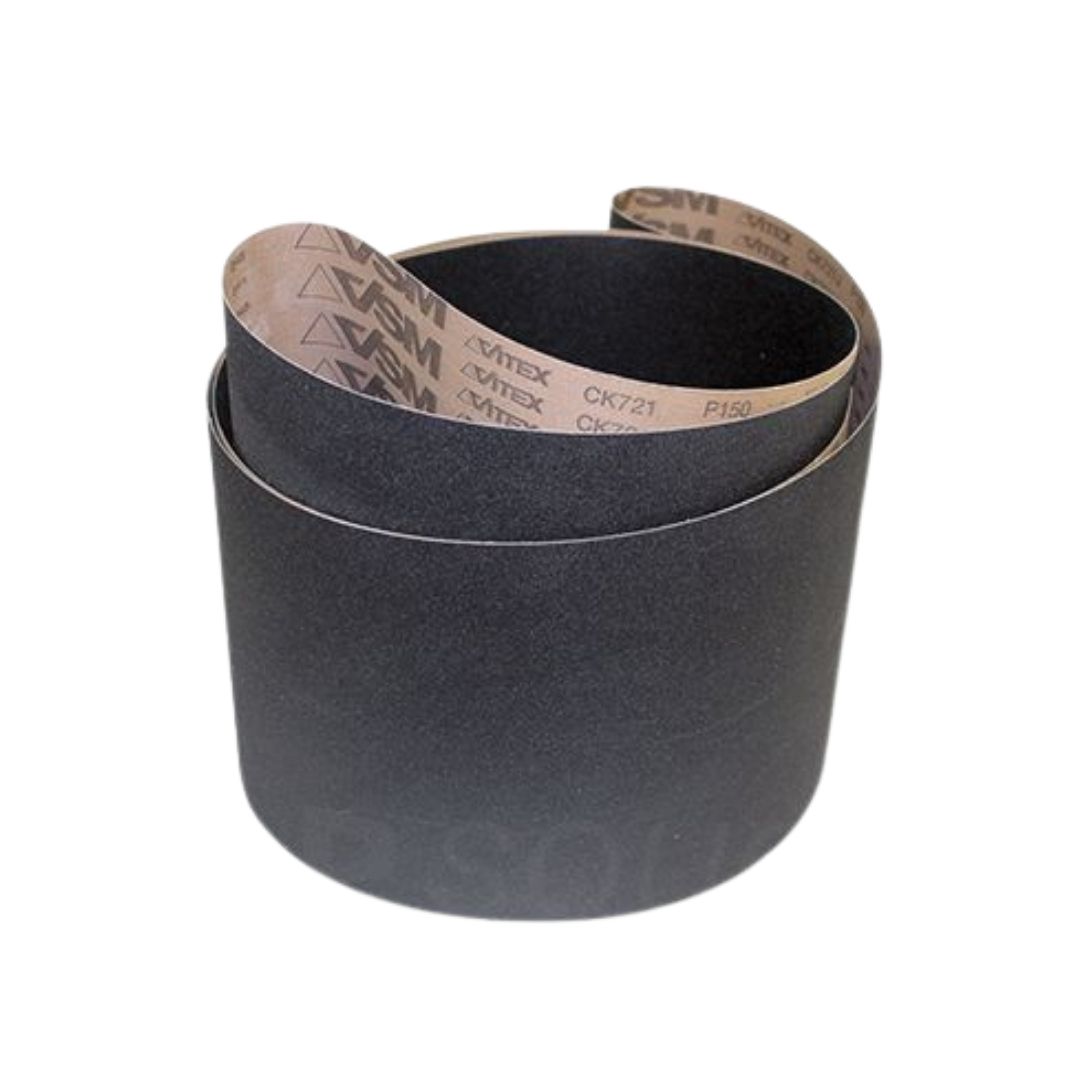
Practical guide of abrasive bands
The abrasive bands, essential in cutlery workshops and many other corporations, allow a multitude of sanding and polishing operations.
There are many models, the most classic to the latest technological innovations, and it is sometimes complicated to navigate.
Soucille spap has therefore prepared a small guide with the types of bands we offer.
First of all, it is essential to define some terms for the good understanding of the following article:
The abrasive grain
A abrasive belt consists of a support (paper or canvases of different natures) on which are distributed grain Abrasive more or less big and more or less hard. It is this grain of abrasive, or rather these hundreds of thousands of grains that will do the work of removal of matter.
The size of the grains, or granulometry, is governed in Europe by FEPA (Federation of European Producers of Abrasives), which has, to this day, no less than 23 grain dimensions of P12 to P2500 for abrasives Applied. Granulometry equivalence tables are widely distributed over the Internet.
The size of the grains of the abrasive bands, or granulometry, is determined in Europe by the FEPA standard and corresponds to the average dimension of the abrasive grains expressed in microns (microns).
To remember: The higher the FEPA (P) standard, the more the abrasive grain is fine and vice versa.
Supports
Abrasive grains are deposited on media that may be different natures, which gives them rigidity or, on the contrary, great flexibility.
X: Rigid
The X band supports are composed of cotton or polyester canvas, which makes them very resistant. They are versatile and adapt perfectly to production environments where longevity is essential.
J: Soft
The J band supports are ideal for polishing profiled parts. Their flexibility allows them to adapt to all even the less flat surfaces.
F: Very flexible
These cotton canvas supports, make it easy to follow the outlines and perfectly marry the profiles of your parts.
Once all these notions, it is now necessary to make the difference between the different types of abrasives and their distribution on the support. Again do not panic, you are explained everything.
Different types of abrasives
Ceramics
Let's start with our abrasive belt in ceramic And his beautiful red color.
Of a hardness of 7 on the scale of Mohs *, the ceramic grain is the most cutting and aggressive, which makes this band perfect for wholesale Material abductions On hard materials such as steels, aluminum or nickel or cobalt alloys. Auto lubricated, it avoids heating.
It has a large service life and capacity self-grinding, which allows him to maintain his power of cut throughout his use. This band combines high performance and competitive cost.
Make your choice from our wide range of grains and support (X, j and f).
The small counteraway counseling, a grain 36 or 40 ceramic, makes it possible to make big removal of material quickly without relying and making wishes. As for the sharpening of your blades we advise you to use a grain 240.


Zirconium
The zirconium grains, a hardness of 7.5 on the scale of Mohs *, allow the removal of material on hard materials such as alloy or stainless steels, non-ferrous metals or wood!
Very convenient to work his blade and his sleeve without changing !
Here, it's a little less complicated, since this gang Does only exist in rigid support but always with different grains available.
Corundum (or aluminum oxide)
Commonly called "Corundum", aluminum oxide, a hardness of 9 to 9.3 on the Mohs scale *, is an abrasive very qualitative economicideal for the work of alloy steels as well as the woods. Its applications are multiple. This abrasive is also suitable for achieving your finishes with our very fine grains available.
Like all our abrasive bands, you have the choice between rigid, flexible or Very flexible.
Some bands have an additional adhesive layer of Stearate. This is the case of our 532f Also composed of corundum. This extra layer considerably limits dust retention and residue for prolonged lifetime of the band and a significantly higher removal of material.


Silicon carbide
The abrasive silicon carbide, a hardness of 9.3 to 9.5 on the Mohs scale *, is an ultra-hard ceramic mineral abrasive that can be found in nature in a very rare form: moissanite.
He gives the bands a clear and brilliant cut.
It is very effective for the work of specific materials such as glass or stone. Its broad scope also makes it possible to work non-ferrous metals, non-alloy steels or composite materials.
The support of the polyester or cotton canvas strip is waterproof, which allows the use of the dry strip, under watering or even under oil.
Our tips for using your abrasive bands
Finally, here is our advice so as not to burn the steps when using your abrasive bands:
It does not need not jump steps And go too fast if you want a good result. There is no particular rule, each cutter has its own technique but it is better to use the grains in this order: 40, 60, 80, 150, 240.400. 600. If, for example, you use a grain 40 then directly 120, it will leave traces in the first step, and it will be necessary to press much stronger with the grain 120 which will make the tape suffer.
So remember: all the time you think gaining start will be lost time on arrival!
